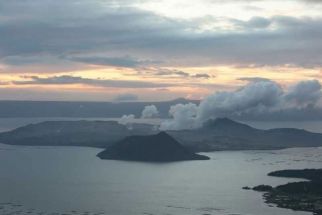Boracay nears carrying capacity
LOS BAÑOS, Laguna – Boracay, one of the country’s most famous island resorts, is nearing its carrying capacity.
Carrying capacity is the population that an area can support without undergoing deterioration.
“Our projections show that most likely in the next two to three years, Boracay’s carrying capacity will be exceeded owing to the continuous increase in the number of tourists visiting the island,” said Dr. Lope Calanog, officer-in-charge assistant director of the Los Baños-based Ecosystems Research and Development Bureau (ERDB) of the Department of Environment and Natural Resources (DENR).
Calanog is the project leader of a study on the tourism carrying capacity of Boracay, which has just been declared state-owned by the Supreme Court.
Conducted by the ERDB and the DENR-Ecosystems Research and Development Service (ERDS) in Region 6, the study specifically focused on the four-kilometer White Beach, the most frequented area on the island.
“Our goal is to know the maximum number of individuals who can be accommodated on the island without affecting the state of the environment, the level of satisfaction of visitors, and the socio-cultural norms of the community,” Calanog said.
So far, the study noted, the number of tourists has not yet exceeded White Beach’s carrying capacity.
Department of Tourism (DOT) records show that from 2007 to 2008, an average of 9,362 visitors and tourists flocked to Boracay every day.
The ERDB-ERDS study noted that the White Beach has a capacity of 10,116 swimmers per day. The beach can accommodate as many as 16,703 sunbathers daily and the coconut groves’ capacity is 14,674 diners per night.
But the picture will change in two to three years if the number of people visiting the island is not regulated, according to the study.
Majority of the tourists interviewed for the study were local tourists while others were overseas Filipino workers and foreigners. “We have identified opportunities to improve the carrying capacity for the swimming area of the site,” Calanog said.
“Resort operators can increase the effective time for swimming, provide mechanisms to make swimming in the deep portion of the sea more secure, and reduce the space allotted for boat stations,” he added.
The ERDB-ERDS team also suggested that residential sites be immediately zoned to regulate the proliferation of substandard and fly-by-night tourism facilities.
It further recommended the immediate and strict implementation of the recently formulated Solid Waste Management Plan prepared by the Japan International Cooperation Agency.
The draft Boracay Island Environmental Master Plan should also be finalized and implemented as soon as possible to deter the construction of facilities in critical and environmentally sensitive areas.
The study also noted that all visitors were unaware of the rules and regulations relating to their visit to the island.
Given the chance, most of the visitors said they would return to Boracay and were willing to pay an extra charge for the environmental fee (P104 per individual).
- Latest
- Trending
































